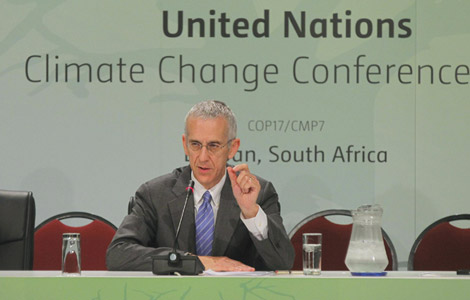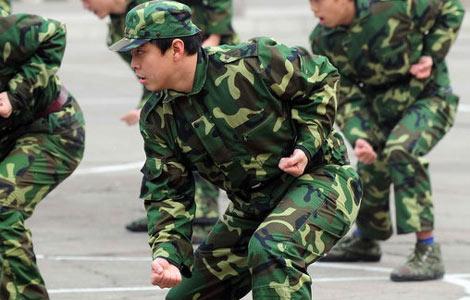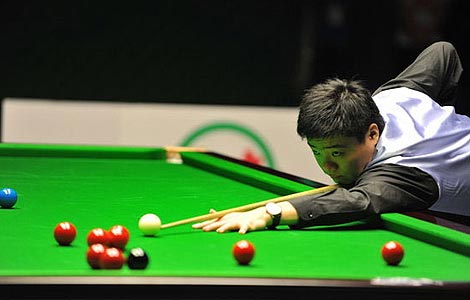Wind rips open Beijing's terminal roof
Updated: 2011-11-24 07:43
By Xin Dingding (China Daily)
|
|||||||||||
BEIJING - The building of the third terminal (T3) at the Beijing Capital International Airport had part of its roof ripped open by a strong wind on Tuesday night, the second time in a year, leading to increasing doubts on the landmark building's resilience.
Passengers at the airport's third terminal said that they saw white and yellow foam composites flying outside the building windows at around 8:30 pm on Tuesday.
"Though I stood pretty far away, I could see a part of the roof was torn open The white foam composite was everywhere, even on the runway," said a passenger surnamed Li.
Designed by British architect Norman Foster (known for working on projects such as the Millennium Bridge in London) and Beijing Architectural Design and Research Institute, T3 was opened in 2008 - the biggest standalone terminal building in the world then.
The airport confirmed the news, saying the strong wind, moving at a speed of 24 meters a second, lifted some of the metal plates on the roof of the terminal's D section at 8:15 pm.
But the damage has not interfered with flight schedules by Wednesday noon when workers finished fixing the roof, the airport said through its official micro blog at Weibo.com, the Chinese version of Twitter.
This is the second such incident in one year, after gusts at a speed of 26 meters a second tore open two parts of T3's roof on Dec 10 last year. About 200 square meters of the roof was damaged, compared to its total area of 320,000 square meters.
The unexpected roof damage, as well as big snowfalls in other cities that day, caused more than 200 delayed and 28 canceled flights.
This year the winds hit a different part of T3's roof, than they did last year, said an airport source, who declined to give his name.
But incidents of strong winds damaging the terminal roof twice within the space of a year have made people skeptical about its quality.
"How could Hong Kong's Chek Lap Kok Airport, also designed by Norman Foster, withstand typhoons so well throughout the past decade?" asked a netizen from Shenzhen at Weibo.com.
Shao Weiping, executive chief architect of Beijing Architectural Design and Research Institute, who had a role in designing T3, believed that the torn roof was not caused by design flaws.
"While architects designed the general look of T3, suppliers made special designs to make sure the metal panels used on the roof could resist strong winds," he said.
"The metal roof technology used to build T3 was a mature one that has stood tests for more than 20 years," he said, adding he personally believed that this could be more of a quality-related issue.
The airport company refused to make more comments on the accident on Wednesday, stressing they did not build the structure but were only using it.
Last year, Ding Jiangang, deputy head of the capital airport's expansion project command, told the media that the roof was designed to resist winds of 28.3 meters a second.
But he said that the building's capacity to resist wind was previously only tested under simulated conditions, which could differ slightly from an actual situation.
He stressed the importance of maintenance, but also added that the roof area was too large for maintenance workers to make sure every screw on the metal panels was tightened after five years' use.
Hot Topics
HIV/AIDS, Egypt protest, Thanksgiving, climate change, global economic recovery, home prices, high-speed railways, school bus safety, Libya situation, Weekly photos
Editor's Picks

|

|

|

|

|

|







